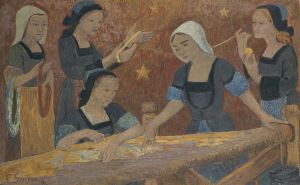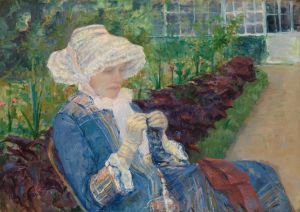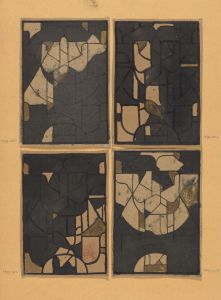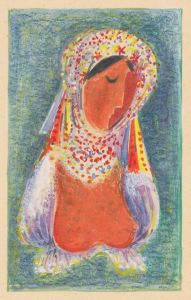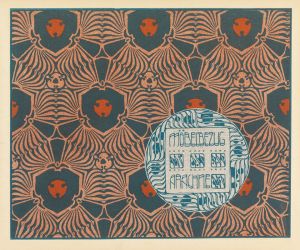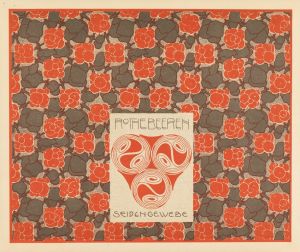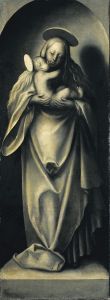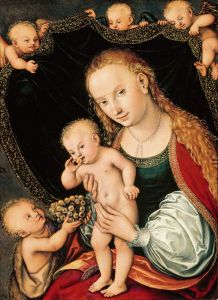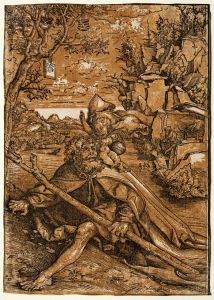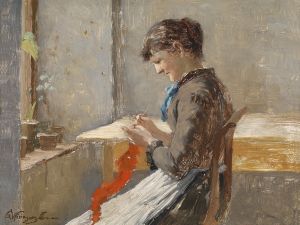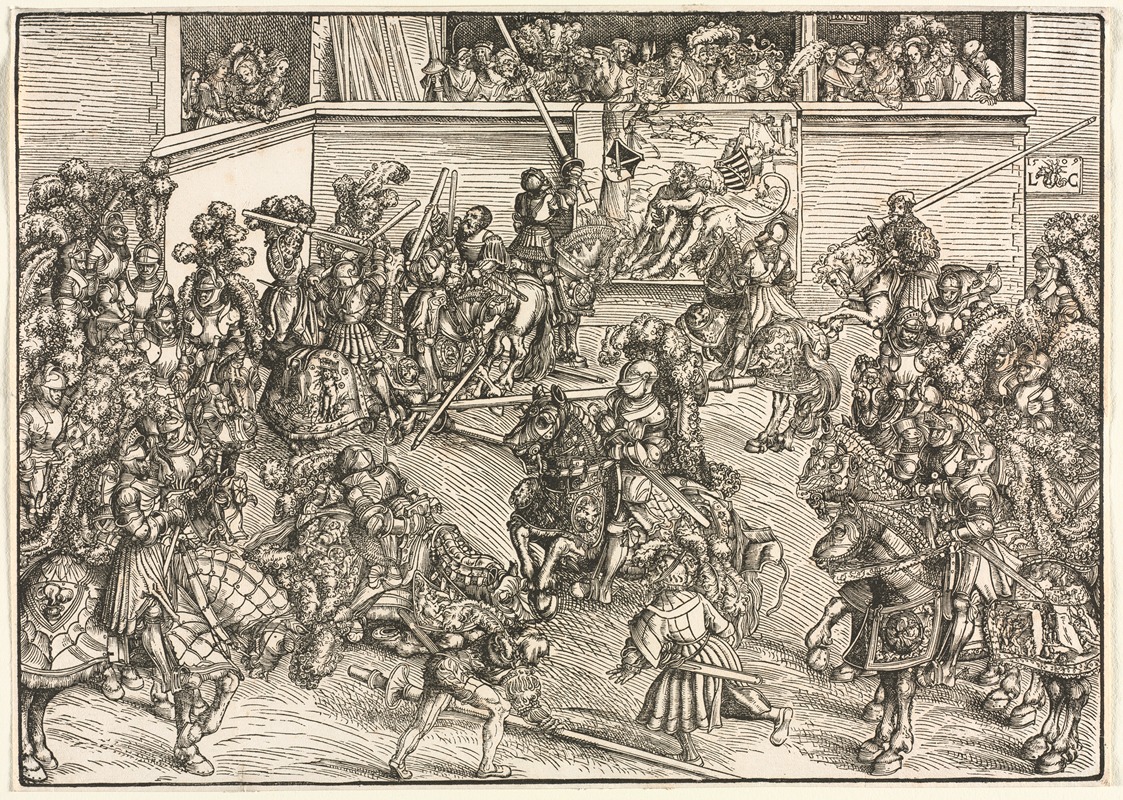
The Second Tournament with the Tapestry of Sampson and the Lion
A hand-painted replica of Lucas Cranach the Elder’s masterpiece The Second Tournament with the Tapestry of Sampson and the Lion, meticulously crafted by professional artists to capture the true essence of the original. Each piece is created with museum-quality canvas and rare mineral pigments, carefully painted by experienced artists with delicate brushstrokes and rich, layered colors to perfectly recreate the texture of the original artwork. Unlike machine-printed reproductions, this hand-painted version brings the painting to life, infused with the artist’s emotions and skill in every stroke. Whether for personal collection or home decoration, it instantly elevates the artistic atmosphere of any space.
Lucas Cranach the Elder, a prominent German Renaissance painter, is known for his significant contributions to the art world during the 16th century. Among his diverse body of work is the painting titled "The Second Tournament with the Tapestry of Sampson and the Lion." This artwork exemplifies Cranach's skill in capturing the essence of the period's cultural and artistic milieu.
Lucas Cranach the Elder was born in 1472 in Kronach, Germany. He became a leading figure in the German Renaissance, renowned for his portraits, religious scenes, and mythological subjects. Cranach served as a court painter to the Electors of Saxony, which significantly influenced his career and artistic output. His work is characterized by its attention to detail, vibrant colors, and the ability to convey complex narratives through visual art.
"The Second Tournament with the Tapestry of Sampson and the Lion" is a testament to Cranach's mastery in depicting historical and allegorical themes. The painting illustrates a tournament scene, a popular subject in the art of the time, reflecting the chivalric culture and the fascination with knightly virtues. Tournaments were not only sporting events but also social gatherings that displayed the wealth and power of the nobility.
In the background of the painting, a tapestry depicting the biblical story of Samson and the Lion is prominently featured. This story, from the Book of Judges in the Old Testament, tells of Samson's extraordinary strength, which he used to slay a lion with his bare hands. The inclusion of this tapestry within the painting serves as an allegorical reference, possibly symbolizing strength, bravery, and the triumph of good over evil. Such biblical and mythological references were common in Renaissance art, as they provided moral and ethical narratives that were widely recognized by contemporary audiences.
Cranach's ability to integrate these elements into a cohesive composition demonstrates his artistic prowess. The figures in the painting are rendered with precision, showcasing the elaborate costumes and armor typical of the period. The use of color and light enhances the dynamic nature of the scene, drawing the viewer's eye across the canvas and inviting them to explore the intricate details.
As with many of Cranach's works, "The Second Tournament with the Tapestry of Sampson and the Lion" reflects the influence of the Northern Renaissance, characterized by a focus on realism and attention to detail. Cranach's work often included a blend of religious and secular themes, appealing to both the courtly patrons who commissioned his work and the broader public.
This painting, like much of Cranach's oeuvre, provides insight into the cultural and social dynamics of 16th-century Germany. It captures the spirit of an era where art served not only as decoration but also as a medium for storytelling and moral instruction. Through his paintings, Cranach contributed to the rich tapestry of Renaissance art, leaving a legacy that continues to be studied and admired today.
In summary, "The Second Tournament with the Tapestry of Sampson and the Lion" by Lucas Cranach the Elder is a notable example of Renaissance art that combines historical, cultural, and allegorical elements. Cranach's skillful depiction of the tournament scene, along with the symbolic tapestry, highlights his ability to convey complex narratives through his art. This work remains a valuable piece of art history, reflecting the artistic and cultural values of its time.





